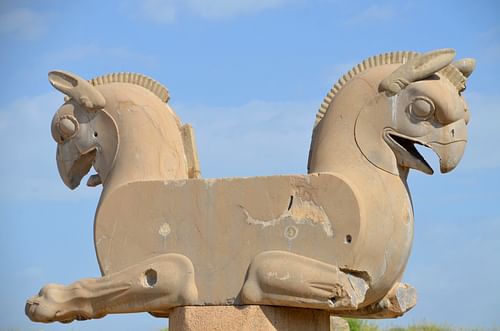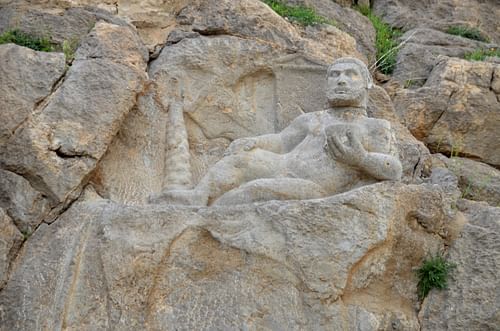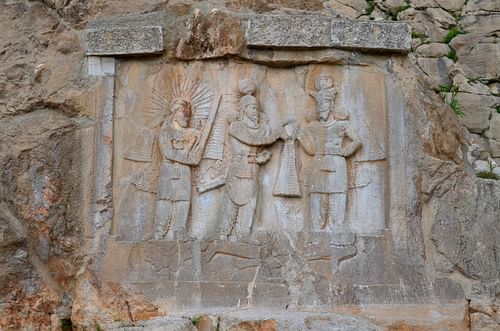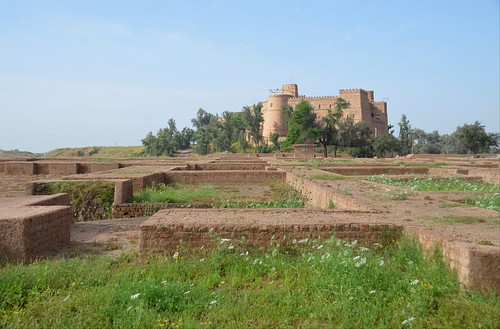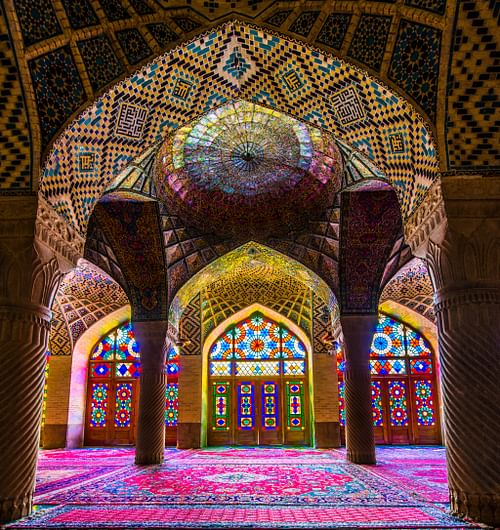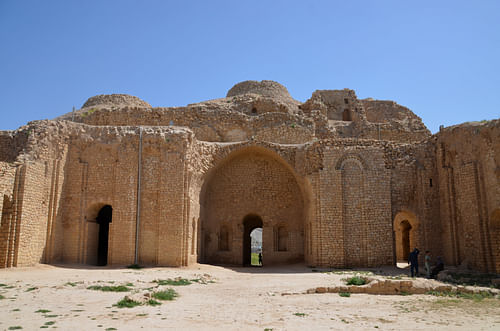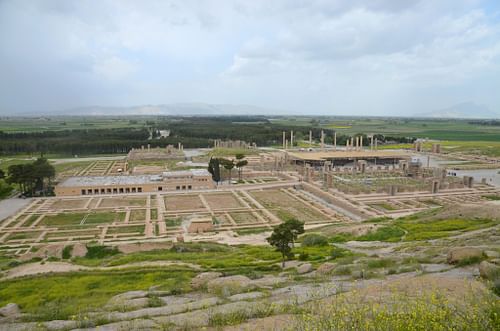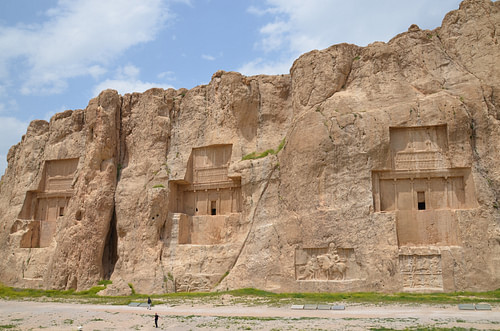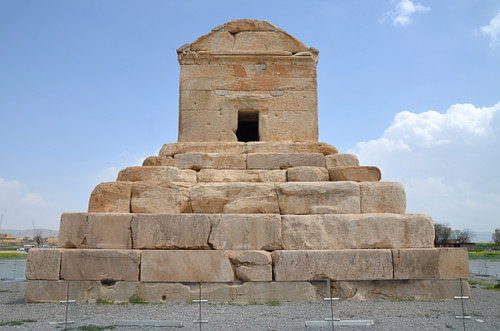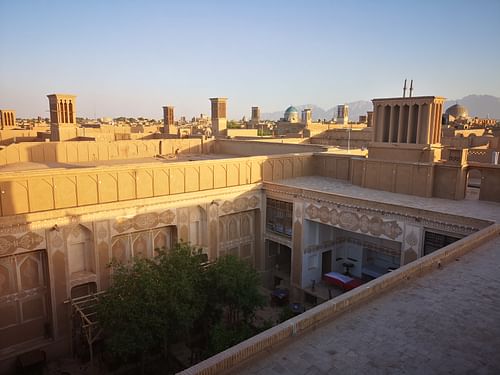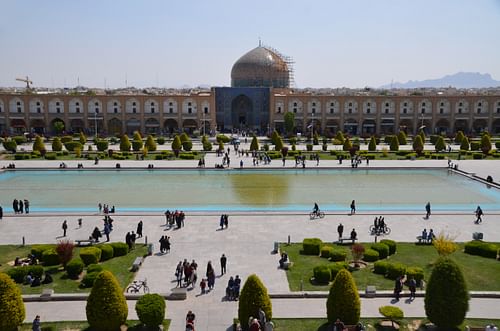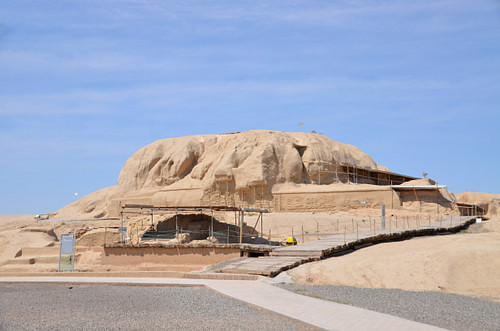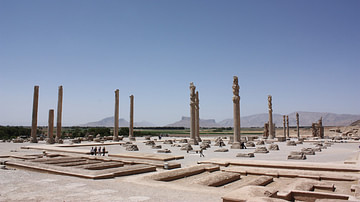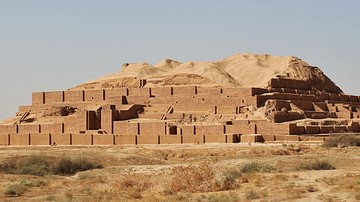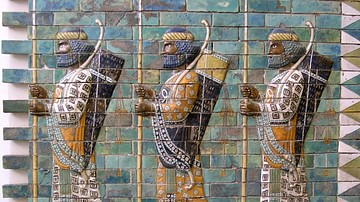Iran, or Persia as it was formerly known, is a country with a long and rich history stretching back thousands of years and where many civilisations thrived. With 24 historical sites registered on the UNESCO World Heritage List and each with its own story to tell, Iran offers an incredible variety of archaeological and cultural wonders.
There is no shortage of wonderful places to explore in Iran from ziggurats to ancient palaces, Zoroastrian temples, sublime mosques, Christian monasteries, and beautiful Persian gardens.
Iran still lies far off the beaten track for most travellers, and the negative portrayal of the country in the western media has discouraged many people from visiting. It is a pity because Iran hosts some of the world's oldest cultural monuments and is one of the friendliest countries on earth. In April 2019, I went on a two-week archaeological tour with Travel the Unknown, a travel agent based in the United Kingdom that specialised in "off the beaten track" travel for small groups (its activity ceased due to the ongoing COVID-19 pandemic).
Our "Glory of Persia" archaeology tour took us to Iran's four ancient capitals: Susa, Ecbatana, Pasargadae, and of course, Persepolis. We traced the roots of the Elamites (c. 3200 to c. 539 BCE), the Achaemenid Empire (553-312 BCE), Parthia (247 BCE to 224 CE), and the Sasanian Empire (224-651 CE), the last Persian empire before the Arab invasion in the 7th century CE. Most of the classical tours of Iran go to Tehran, Isfahan, Shiraz, Persepolis, and Yazd, but we ventured off the beaten path to visit the lesser-known ancient sites.
Tehran
We began our visit to Iran with a tour of Tehran's National Museum, a beautiful brick building influenced by the Sasanian vaults of the famous archway of Ctesiphon in Iraq. The museum has a rich collection of exhibits spanning the country's long history from early prehistory to the Achaemenid and later periods. It contains many archaeological finds from excavations all over Iran, including Persepolis, Susa, and other significant sites.
One of the museum's gems is an exquisite bas-relief sculpture from Persepolis depicting a seated king, Darius I (r. 522-486 BCE), or Xerxes I (r. 486-465 BCE), receiving an audience. The other highlights include a statue of Darius from Susa, a column with a bull-shaped capital from Persepolis, and silver vessels from the Sasanian period. After we visited the museum, we strolled through the streets of Tehran, had our first Persian meal, and enjoyed the superb views of the city's skyline against the snow-capped mountains.
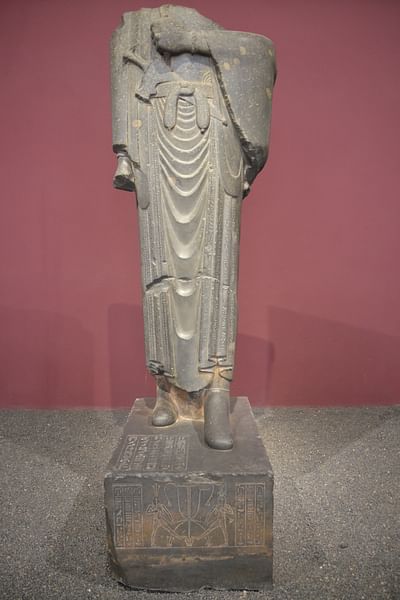
Hamadan & Kermanshah
On our second day, we left the capital to reach Hamadan, considered the cradle of Iranian history and civilisation. It is here, in the Zagros mountains of central-west Iran, that Hegmataneh, the first Median capital, was founded in the 8th century BCE. Cyrus the Great (d. 530 BCE) defeated the last Median king, Astyages (585-550 BCE), in 550 BCE, and Hegmataneh became the summer residence of the Achaemenid court.
The city was taken by Alexander the Great (l. 356-323 BCE) in 330 BCE and was renamed Ecbatana. A testimony to Alexander's presence is an intriguing statue of a lion standing in the centre of the city believed to have been erected in honour of his close companion, Hephaestion (356-324 BCE), who died there in 324 BCE. Ecbatana later became one of the capitals of the Parthian Empire.
The next day, we headed south towards Kermanshah, stopping at the Temple of Anahita at Kangavar. The temple was a major sanctuary erected to the goddess of water and fertility, who was worshipped in ancient Persian religion alongside Ahura Mazda. The vast temple dates back to the Seleucid or Parthian eras and was built of enormous stone blocks. It has an imposing entrance that echoes the Apadana at Persepolis. Unfortunately, most of the building lies in ruins, but the remains scattered around the site help us imagine how massive this structure must have been 2,000 years ago.
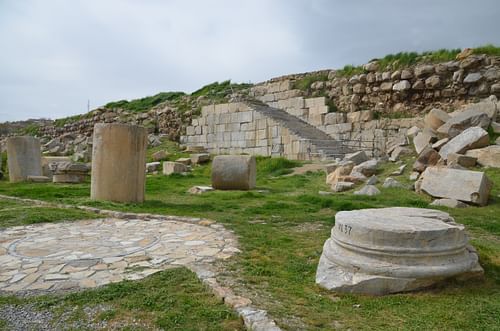
Further south, we explored the scenic cliff of Behistun, which bears the famous bas-relief sculpted by Darius the Great in 521 BCE as propaganda for his victory over the nine kings who had rebelled against him. The Behistun Inscription was crucial to deciphering the cuneiform script as it includes the same text written in three languages: Old Persian, Elamite, and Akkadian. In addition to the Achaemenid relief, there are three Parthian carvings and a Seleucid carving showing a reclining Hercules.
Day five saw our first encounter with the Sasanians! A few kilometres northeast of Kermanshah lies the Sasanian site of Taq-e Bostan, with its outstanding bas-reliefs carved into the base of a cliff. The first of these reliefs shows the investiture of Ardashir II (r. 379-383 CE), receiving the sacred crown from his predecessor Shapur II (r. 309-379 CE) or Ahura Mazda. The king is standing on top of the Roman emperor Julian the Apostate (r. 361-363 CE), whom he defeated in 363 CE. The other two carvings are sheltered in a grotto. The biggest one depicts the coronation of Kosrau II (r. 590-628 CE), the last great Sasanian king, who is shown on horseback in full battle armour. The other niche has king Shapur III (r. 383-388 BCE) and his grandfather Shapur II, depicted leaning on their swords.
Susa, Chogha Zanbil, & Shushtar
The next day was one I had been particularly looking forward to, as we were about to visit the ancient site of Susa, the nearby Chogha Zanbil ziggurat, and the Sasanian water mills at Shushtar. However, recent flooding had cast some uncertainty over the day's programme because some of the main roads in the region had been closed for weeks. It was with a certain amount of relief that we arrived at the first stop of the day in Susa. Inhabited since the end of the 5th millennium BCE, Susa was one of the main Elamite cities before becoming the capital of the Persian Achaemenid Empire in the 4th century BCE.
Darius the Great made Susa one of his residences and remodelled the city's urban centre by constructing a palace complex. The remains at Susa date back to this period and are dispersed on two hills. They consist of the Apadana and the Acropolis mound, on which stands a 19th-century castle built by French excavators. Many artefacts from Susa have found their way to the Louvre in Paris, but Susa's on-site museum hosts a few interesting pieces.

During our visit to Susa, a local guide informed us that the road to Chogha Zanbil, 30 kilometres (17 miles) away, had just reopened so we would be able to visit. Chogha Zanbil is a magnificent, 3300-year-old ancient Elamite complex. The principal element of this complex is an enormous brick ziggurat, a large stepped pyramidal temple dedicated to the Elamite divinity Inshushinak, the protector and patron god of Susa. The Chogha Zanbil ziggurat is considered the best-preserved of its kind and is the finest surviving testimony to the once-great Elamite civilisation. Chogha Zanbil became the first Iranian site inscribed on the UNESCO World Heritage List in 1979.
We finished the day with a visit to the Shushtar Hydraulic System. Dating to the Sasanian era, this extraordinary piece of engineering is composed of a series of dams, canals, tunnels, and watermills that form a sophisticated irrigation system. The mills, one of which is still functioning, were used to grind wheat and barley. Approximately two kilometres (1.24 mi) away from the dam are the remains of the easternmost Roman bridge.
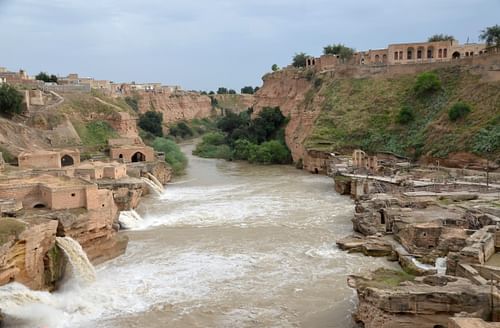
Bishapur, Shiraz, & Firuzabad
After a night in Ahvaz, we spent a big chunk of the day driving towards Shiraz. The mountain scenery made for a pleasant drive despite the many hours it took us to reach our only visit of the day in Bishapur. The site is known for its Sasanian-era bas-reliefs and the ruins of what was once a royal city. Bishapur was built in 266 CE on the order of Shapur I (r. 240-270 CE) by Roman soldiers who had been captured after the defeat of the Roman emperor Valerian (r. 253-260 CE).
The Sasanian king also had the sides of the nearby gorge decorated with huge historical reliefs commemorating his triple triumph over Rome. The six reliefs show scenes such as Shapur enslaving Valerian. The site was declared a UNESCO World Heritage site in June 2018 as part of the "Sasanid Archaeological Landscape of Fars Region."

The following day was spent exploring the main sights of the beautiful city of Shiraz. With a history dating back 4,000 years, Shiraz has been an important trading centre and the heartland of Persian culture for millennia. But above all, Shiraz is the city of poetry, of Saadi (l. 1210 to c. 1291 CE) and Hafez Shiraz (l. 1315-1390 CE). The popularity of these famous poets is such in Persian literature that their memorial tombs have become major pilgrimage sites for Iranians. Shiraz is also home to exquisite mosques and beautiful gardens.
My favourite sight was the Nasir al-Molk Mosque (also known as the Pink Mosque) with its pink tiles and stained-glass windows. This mosque is, undoubtedly, the most photographed building in Shiraz. The light shines through its colourful vitrines at sunrise, creating a kaleidoscope of patterned dots of light on its carpeted floor.
On day nine, we took an excursion to Firuzabad, an ancient Sasanian city located 120 kilometres (74 mi) south of Shiraz. About 20 kilometres (12.4 mi) from Firuzabad, the road enters an impressive gorge, overlooked by the fortifications of a Sasanian castle, built about 100 metres (328 ft) above the road by Ardashir I (r. 224-240 CE), the founder of the Sasanian Empire. A bit farther on are the remains of a beautiful Sasanian bridge and a bas-relief carved into the rock face showing the celebration of Ardashir I's victory over the Parthian king Artabanus IV (r. 213-224 CE). Nearby is the enormous palace of Ardashir, which was built on a plain overlooking a small natural lake.
A few kilometres farther on are the ruins of the palace of Ardashir I with its distinctive barrel-vaulted rooms and a large courtyard. Firuzabad is also part of the "Sasanid Archaeological Landscape of Fars Region."
Persepolis, Naqsh-e Rostam, & Pasargadae
Finally, we had the chance to see Persepolis and the tomb of Cyrus the Great. Persepolis is undoubtedly the most famous of all the archaeological sites in Iran. Founded around 518 BCE by Darius the Great, the site served as the ceremonial capital of the Achaemenid Empire. It was intended and designed as a showcase for the empire, as it was here that ambassadors from all over the Persian world, from Ethiopia to Elam, would congregate each year to offer tribute to the king. However, Artaxerxes I (r. 465-424 BCE) did not complete the tremendous task of building such a complex until about 100 years later.

Our guide decided to hire an on-site archaeologist to help us fully appreciate the ruins. Upon entering Persepolis, we were immediately confronted by an impressive wall about 15 metres (49 ft) tall – an artificial terrace built on the complex. As we climbed the monumental staircase, the rest of the site was progressively revealed to us in all its splendour. We found ourselves face to face with two massive winged bulls that decorated the Gate of All Nations built by Xerxes I.

From the south door of the Gate of All Nations, we proceeded directly to the eastern staircase of the Apadana, adorned with finely crafted friezes depicting the procession of dignitaries bringing valuable gifts as tribute to the king. We then walked through Apadana Palace, a great audience hall where the king received foreign delegations. Six rows of six columns, some 20 metres tall (65.6 ft) with animal-headed capitals stood in this immense hall. The palace of Darius has remained well-preserved and is the more striking of the two. We finished our visit by climbing up to the rock tombs to enjoy a panoramic view of Persepolis.
We then headed to the nearby site of Naqsh-e Rostam, the necropolis of the Achaemenid Dynasty, where monumental royal tombs were cut out of the rock. The site features four burial tombs of Achaemenid kings believed to be those of Darius I, Xerxes I, Artaxerxes I, Darius II Ochus (r. 423-404 BCE), and eight Sasanian reliefs depicting vivid scenes of imperial conquests and royal ceremonies. The other important Achaemenid monument at Naqsh-e Rostam is a stone structure whose original purpose has been discussed for several decades.
We saw more Sasanian reliefs at Naqsh-e Rajab, where four limestone rockface inscriptions and bas-reliefs feature the investitures of Ardashir I and Shapur I, as well as Shapur's military victory over the Roman army.
We rounded up the day with a visit to Pasargadae, the earliest capital of the Achaemenid Empire, founded by Cyrus the Great in the 6th century BCE. The ruins are less well-preserved than those of Persepolis, but the site is home to the famous Tomb of Cyrus. Pasargadae also provides the earliest example of the Persian "Chahar Bagh," a traditional and sophisticated form of Persian gardens.
Yazd, Meybod, Na’in, Isfahan, & Kashan
Our next stop, the city of Yazd, is the centre of Iran's small Zoroastrian community, where the flame of the Zoroastrian Fire Temple is said to have burned for 1,500 years. We visited the Zoroastrian Towers of Silence, which are circular, raised structures built by Zoroastrians for excarnation – that is, for dead bodies to be exposed to the sun and scavenging birds, thus preventing them from being contaminated by demons. The towers were used until the 1970s.

The desert city of Yazd is one of the most picturesque Middle Eastern cities. Its well-preserved mud-brick houses, distinctive badgirs (wind towers), and numerous historical sites make it a "don't miss" destination in Iran.
The next day we visited Meybod, another beautiful desert town composed of mud-brick buildings dating back 1,800 years. Then we continued to Na'in to visit the Castle of Narenj, a fire temple from the Parthian and Sasanian eras, before going on to Isfahan. Once the dazzling capital of the Seljuk and Safavid dynasties, Isfahan is renowned for its beauty and splendour, which has given rise to the proverb "Isfahan is half the world." We spent a whole day sightseeing, visiting the main sites, and walking through the historic bazaar and across the UNESCO-listed Naqsh-e Jahan Square, one of the largest in the world.
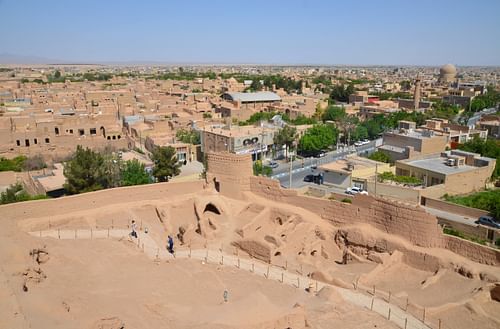
Our last day in Iran was spent at Kashan to explore the city, visiting the Fin Garden, a traditional house with a Persian garden, and the Sialk Mounds, a ziggurat dating back to the 3rd millennium BCE, before returning to Tehran.
The fantastic hospitality of the Iranian people, along with the impressive offering of historical sites, beautiful landscapes, and delicious food, makes Iran one of tourism's most underrated holiday destinations. To travel to Iran is to travel through time, although there is not enough time to see it all in one visit. Iran is a vast country, and I hope to return one day to explore it more.
This article was originally printed in Issue 25 of Ancient History Magazine.

